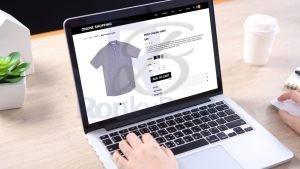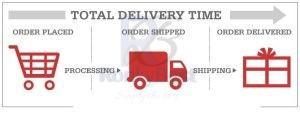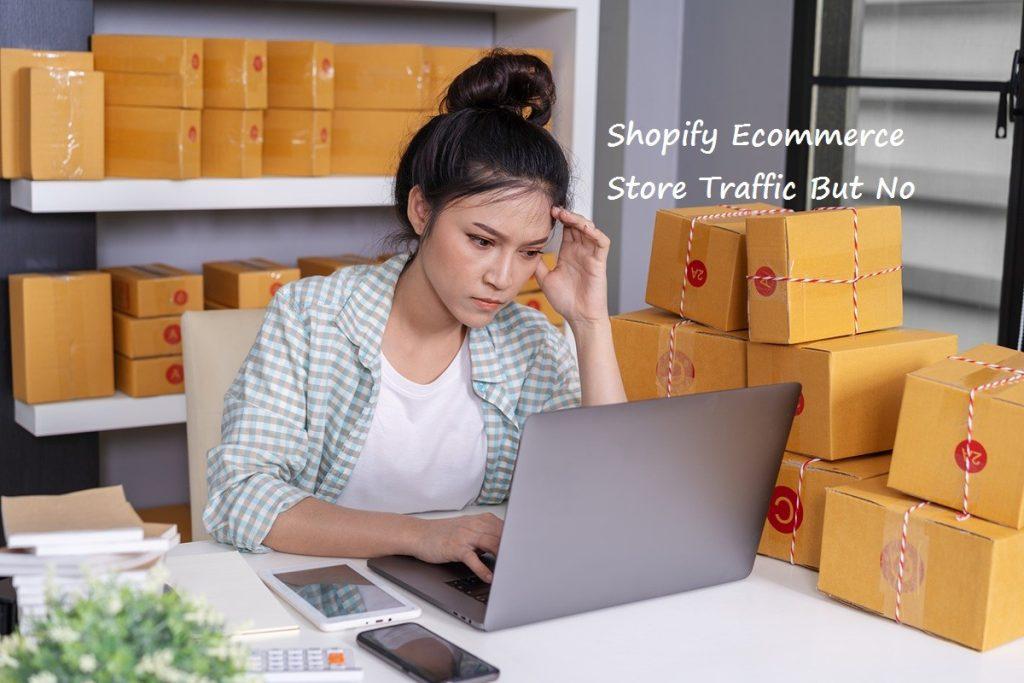High Conversions Ecommerce Guide: How To Improve Ecommerce Website Conversion Rate
Getting traffic with no sales on our ecommerce stores is common amongst online sellers and dropshippers alike whether using Shopify or any ecommerce platform. Especially to those in the beginning stages of their journey.
Converting visitors into paying customers is one of the most difficult ecommerce challenges. An eCommerce website may have a lot of traffic, clicks, and impressions, but it isn’t making the sales it should. What can they do to increase their sales?
It’s normal for online sellers and dropshippers to get traffic but no sales on their Shopify businesses. Especially to those who are just starting out on their adventure.
One of the most difficult aspects of ecommerce is converting visitors into paying customers. Although an eCommerce website receives a lot of traffic, clicks, and impressions, it does not generate the profits it should. What can they do to boost their sales/profits? High Conversions Ecommerce Guide: How To Improve Ecommerce Website Conversion Rate will walk you through what you need to know and do.
The first step is to figure out why your clients aren’t converting. After that, we’ll go over the remedies to figure out how to turn our misdirected traffic into sales.
This post will take you step by step through the process of converting your Shopify ecommerce dropshipping store into a sales conversion machine.
Sound cool right? Let’s get started!
Why am I getting traffic and clicks to my Shopify ecommerce store but no Conversions?
The following are some of the reasons why our Shopify dropshipping companies are receiving traffic and clicks but no sales:
1. The Wrong Audience is Being Targeted

We are not showing our ads to the proper target group, which is one of the key reasons why we are having trouble turning store visits into sales. When you run the first few ads, you’ll likely get poor results. However, the more we attempt, the more we learn, and success will finally knock on our door.
2. Homepage Isn’t Attracting Visitor

Our homepage is one of the most important pages on our online store. Even though we are targeting our ads to our product pages, many visitors click through to our homepage to see what our website is all about. Therefore, we need our homepage to look clean, professional, and relevant to our target audience.
When a visitor clicks and sees a poor-looking homepage with low-quality images and an overall non-professional look, they will be nothing more than more traffic without conversions.
3. Poor Product Pages

In most cases, our product pages are the first impression our visitors will get when entering our ecommerce dropshipping stores. And we’re all aware of the power of first impressions. This means we must put in the most effort possible on our product pages and optimize them for conversion.
Examine your product pages thoroughly and put yourself in the shoes of your visitors. Are you persuaded to purchase the product? If not, continue reading for all of our solutions.
4. Legal Pages/Policies Are Missing

Although it may appear tedious, our users look for legal papers and regulations when visiting our online store. Since they never heard of us before, a little reassurance and confidence can go a long way in convincing them.
5. Slow Shipping And Delivery Times

An additional factor that makes visitors exit our Shopify eCommerce dropshipping stores without buying anything is our shipping and delivery times. The majority of purchasers want their packages to arrive as soon as possible. In other words, anywhere from a few days to a week, and no more than two.
Shipping policies of three weeks, one month, or longer will result in a reduction in our total sales. And, the ones that will buy are likely to complain about the slow shipping times.
6. Poor Website Navigation

Many of our potential customers will visit our website to learn more about who we are and what we have to offer. Our hard-earned visitors, as well as our sales, will go elsewhere if our Shopify dropshipping sites are not user-friendly in the navigation section.
That’s why it’s essential to have a store that’s easy to navigate through, with all of the relevant pages on our header and footer menus.
7. Slow Loading Pages

Everyone wants what they want, and they want it now. When shoppers enter our website, their subconscious timer begins to tick. If within three seconds our online store is still trying to load, we can forget about getting anything out of our traffic.
Online shoppers are not looking to put their hard-earned money onto annoying, slow-loading websites. It feels unprofessional and provides an overall poor user experience.
However, you may relax because we’ve provided methods below to keep your visitors engaged in a fast-loading, high-converting Shopify dropshipping store.
8. Saturated/non-competitive product Enough with the product competition

Finding a winning product that no one else has discovered requires a keen eye and considerable product investigation. On the one hand, a saturated product’ is a term that is rarely used.
Fidget spinners and posture correctors, on the other hand, aren’t as easy to sell these days. Almost everyone seems to be selling them, and the rivalry is severe.
But on the other hand, with the right marketing angle and position, any product can sell. Yes, even fidget spinners and posture correctors.
How To Improve Conversions And Get More Sales
Let’s break down the remedies to each scenario with a few more bonus recommendations now that we have a solid knowledge of what’s causing our Shopify ecommerce dropshipping sites to gain traffic but no sales.
Not only will this save us a lot of time and help us convert more traffic to sales, but it will also prevent us from committing many of the mistakes that other dropshippers have made.
1. Look at what your customers are doing in your store
Most of the time, we are unaware of what our website visitors are doing. Although Shopify has an analytics tool built-in, its capabilities are restricted.
We need something that will help us track and analyze our visitors’ behaviors on our Shopify stores. This way, we can learn what we’re doing wrong, and make the right adjustments.
a. Google Analytics
Google, has a free tool called ‘Google Analytics,’ which is a must for everyone to install on their online stores.
Google Analytics is full of ways to track audience demographics, behavior, interests, and much more. Best of all, it’s free, and with more features than Shopify’s built-in analytics tool.
To learn step-by-step how to install Google Analytics on your Shopify store, read their guide on Setting up Google Analytics, and start learning about your traffic behavior.
b. Hotjar website inspection
Hotjar is without a doubt one of the best analytics tools out there. While other web analytic tools excel in analyzing traffic data (like Google Analytics and plenty of similar tools), hotjar lays it out for us without using words or numbers.
Instead, hotjar allows us to watch full video recordings of what our visitors are doing on our website. From the time they enter, everywhere their mouse goes and clicks until they leave our site.
With this helpful tool, we can watch where our visitors get stuck, and what causes them to leave without checking out.
Then, we can make the right adjustments to fix where we went wrong and improve the chance of converting the next potential buyer.
2. Optimize Your Product Page To Convert
Nothing beats a solid first impression when it comes to going out on a first date. The same is true for visitors who arrive at our product sites via our traffic sources.
If consumers don’t like what they see on our product page, they’ll just leave our store and go elsewhere.
As a result, the first impression must be perfect. We need to entice the viewer with a well-designed, fast-loading product page that includes all important information.

3. Make The Checkout Process More Efficient
The checkout procedure is the last place we want to lose potential consumers.
We already put so much work into paid traffic sources to cherry-pick them from a cold audience and turn them hot.
They clicked on our product, expressed interest in buying, but decided at the last minute to not go through with the checkout process.
There are several reasons why our visitors may begin the checkout process but not complete it.
Thankfully, there are a variety of approaches that can be used to refocus their attention and convert those leads into revenue. Here’s how to do it:

a. Shopify Apps for Abandoned Carts
There are a few techniques to recover abandoned cart Shopify Apps when potential customers put things in their basket and leave without purchasing.
Consider the following Shopify Apps for Abandoned Carts:
WhatsApp Chat + Abandoned Cart
WhatsApp Chat Abandoned Cart Shopify
WhatsApp Chat + Abandoned Cart allows us to automate abandoned cart recovery using the power of WhatsApp Chat.
This method is very useful and relevant to those who left their phone numbers before leaving without buying.
Their free plan includes unlimited WhatsApp Chats and phone numbers which is more than enough to convert those abandoned carts without hurting our pockets.
FREE Abandoned Cart ‑ FB ChatFree Abandoned Cart Facebook Chat Shopify App
This Shopify cart recovery app is similar to the example above, only this time through we’re recovering our customers through Facebook Chat.
And yes, we won’t have to pay a dime!
This way, we can take advantage of two gigantic platforms with millions of daily active users to help us recover our lost traffic and convert more potential buyers to our loyal customers.
Consistent Cart ‑ Abandon CartConsistent Cart Abandon Cart Shopify App
While this Shopify recovery app does not have a free plan, it is one of the best all-around cart recovery tools available.
Consistent Cart ‑ Abandon Cart allows us to create an abandoned cart recovery flow using Email/SMS/Push notifications, enables cart syncing between multiple devices, sends our customers ‘happy birthday’ and ‘thank you emails, and more.
Therefore, not only are we going to convert more traffic into sales using the recovery features, but we’re also going to capture our leads and stay in touch with our customers to keep them engaged with our brand.
b. Countdown Timer Shopify App
Adding a countdown timer to the product page is a great way to increase urgency and get our potential buyers to convert.
Naturally, the effect will make buyers understand that this deal will end soon. So, if they like this product, now is the time to click and buy.
c. Add A Store Logo To The Checkout Page
Adding a store logo to the checkout page helps build the buyer’s trust in our brand. It gives more of a trustworthy look and feel.
d. Upselling and Cross-selling Shopify Apps
An additional method to help convert our store traffic to sales is by using upselling and cross-selling Shopify apps on our stores.
With the help of upsells and cross-sells, our average order value (AOV) increases in every purchase.
When we’re upselling, we’re convincing the buyer to switch the product that they want to buy with an upgraded version of that product. Or, adding more of that same product.
In cross-selling, we’re increasing the AOV by recommending additional accessories to go with the main product.
In summary, both methods work well, and implementing both of them will increase our selling chances and overall profit.
4. Obtain and Improve Product Images
Never underestimate the importance of your website’s images.
They not only speed up the loading of our pages, but they also enhance the overall customer experience when visiting our online store.
After all, no one wants to purchase from a website with poor image quality. Alternatively, photos that do not reflect the attributes of the product or our brand.
In today’s social media environment, we want our images to catch the attention of our audience, appear gorgeous, and be easily shared.
Otherwise, our hard-won Shopify store traffic would turn away and no sale will be made.
5. Market Your Products To The Right Audience
Marketing is one of the most difficult aspects of establishing an internet shop.
No matter how huge our budget is, paying traffic sources to send an audience to our website doesn’t ensure we’re bringing the proper audience.
Goods research is essential for selecting the correct product to sell, and the same is true for identifying our target audience and reaching out to them.
Not only that, but you need also to understand how to target them with interesting video commercials to entice them to make impulse purchases. Our goal is to be successful at web marketing on a shoestring budget.
Besides Facebook Ads, another great way to bring traffic to our stores is using Influencer Marketing Platforms. This allows us to hire influencers to post about our products and get their relevant audience to engage with our brand.

6. Improve Shipping And Delivery Times
Another reason our Shopify sites are receiving traffic but no sales is because of our shipping and delivery timelines.
Take a look at your website’s metrics as an example. You might find that a lot of people are looking at your ‘Shipping policies’ page (assuming you have one!)
When it comes to shipping times of 2-3 weeks, today’s shoppers aren’t as patient. They want their stuff right away, even if it means paying a greater price.
As a result, we’ll be able to give faster shipping and delivery times by looking for local warehouses for our target consumers.
For instance, if our target customers reside in the United States, then we’ll look for US suppliers with fast handling times. Like Amazon, Walmart, Home Depot, and more.
The same goes for the UK, Europe, and other countries around the world.
7. Create/Optimize Your Legal Pages/Policies
Our store policies, legal pages, FAQs, contact forms, etc. are a necessity.
Without it, our potential buyers will not have the answers they are looking for before purchasing from our store. And, in many cases, that will be the reason for them to leave without buying
Conclusion:
Shopify is one of the most popular dropshipping platforms, with statistics to back it up. So there’s no reason to abandon your dropshipping ambitions. The above is also applicable to other ecommerce store aside Shopify.
If your stores are having trouble, all that is required is a problem-solving mindset.
To begin, we must first identify the issues.
Then we must act and put in place effective solutions and techniques.
Follow through with all of the strategies listed above, and your sale conversion rates will rise, and you’ll be well on your way to taking your dropshipping business to the next level. At RonkyBest Digital we are available to help you to improve your store conversion. Get in torch with us today.
Good luck, and happy conversions.
More resources to learn from:
Best Selling Print-On-Demand Products to Sell on Shopify or any Ecommerce Store in 2022
Best Print on Demand Shopify Apps to Use in 2022
High Demand Products To Sell on Shopify or Any Ecommerce Platform in 2022

